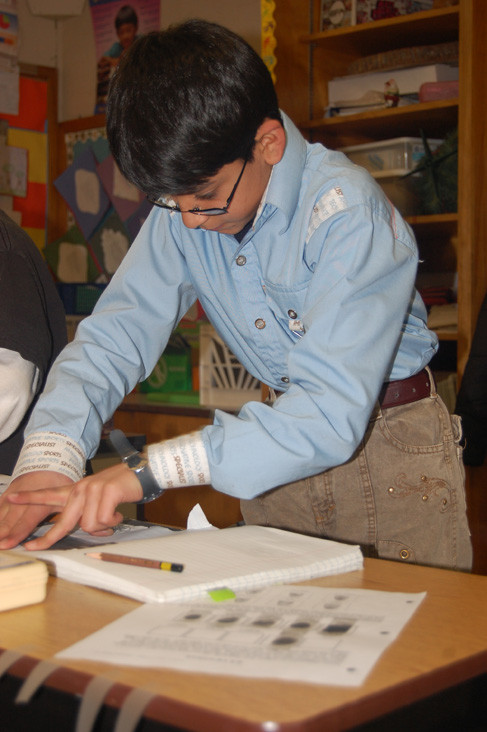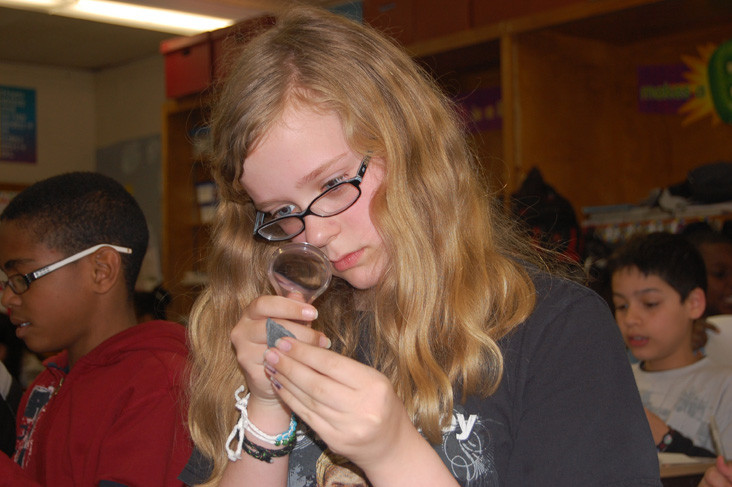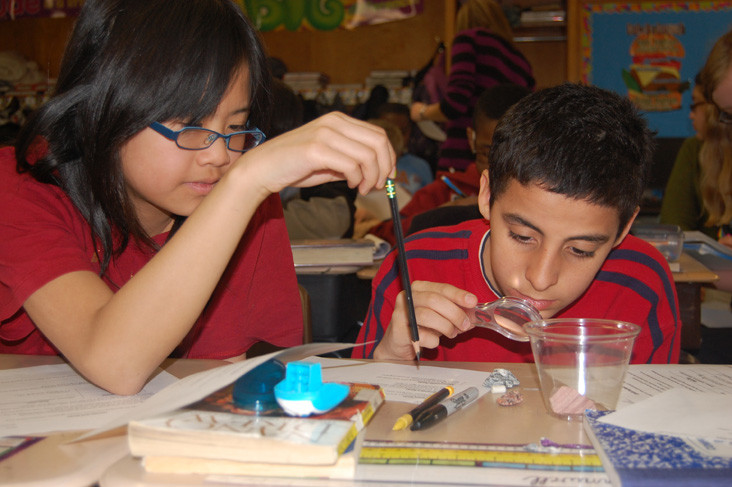High marks for new District 13 science program
While science has always been an important part of the curriculum in District 13, a new program this year is opening up so many new worlds for students.
District officials spent two years trying to find a new science program, one that not only included hands-on experiments, but also had technology support. That way, even if the textbooks became outdated, there would still be access to the latest scientific information without the cost of having to go out and buy all new books. The district found the program it was looking for in a series from Houghton-Mifflin.
“Teachers have a positive review of the program,” said Wheeler Avenue School Principal Christine Zerillo, who heads the district’s science committee. “And we’re hearing good things from the students.”
The science program has lessons for each grade level. Sixth-graders in Jennifer Ferreiro’s class at Wheeler Avenue have recently been studying rocks. Children were given three rocks — one igneous, one sedimentary and one metamorphic — and worked together to determine which was one which. The students were provided with the rocks, a microscope and a key defining the characteristics of each type of rock.
When students go home, they can go their computer and play learning games related to their science lesson. Ferreiro said games include vocabulary review and interactive labs.
Down the hall in Enrico Perciballi’s fifth-grade class, students were taking their fingerprints. It was a lesson on heredity, and they were comparing each print to those of their other fingers, and also those of their classmates.
Cathy Stirrat, an inclusion teacher in the classroom, noted how advanced the science program. “I learned this stuff in high school,” she said, “and they’re learning it now.”
At the same time, she said, the program is designed so every child can learn science. The program offers the textbooks on different reading levels, so no child will be left out of a science lesson if they have difficulty reading.
Perciballi said the hands-on activities are very engaging for the students, and they are generally interested in learning about science.
Downstairs in Lois Waxman’s first-grade class, students were learning about energy. They had containers filled with sand, water and air, and measured the temperature of each. The students would put the containers in the sun and make predictions about it would affect the temperature, then check their results later on. Then they would leave the containers in the dark overnight, and again make guesses and analyze their results.
The program also has an animal unit for first grade, and later on this year, the students in Waxman’s class will grow plants.
After spending two years looking for the right program, Zerillo said that she and the science committee continue to monitor how the new program is working out. She said she wants to make sure that the teachers are supported.
Most importantly, Zerillo said, it’s about making sure the students are learning. So far the early returns are good. “These kids just love science,” she said, “and how they’re learning about their own world by doing things.”

 58.0°,
Partly Cloudy
58.0°,
Partly Cloudy 











